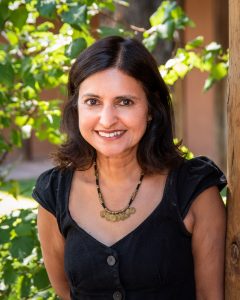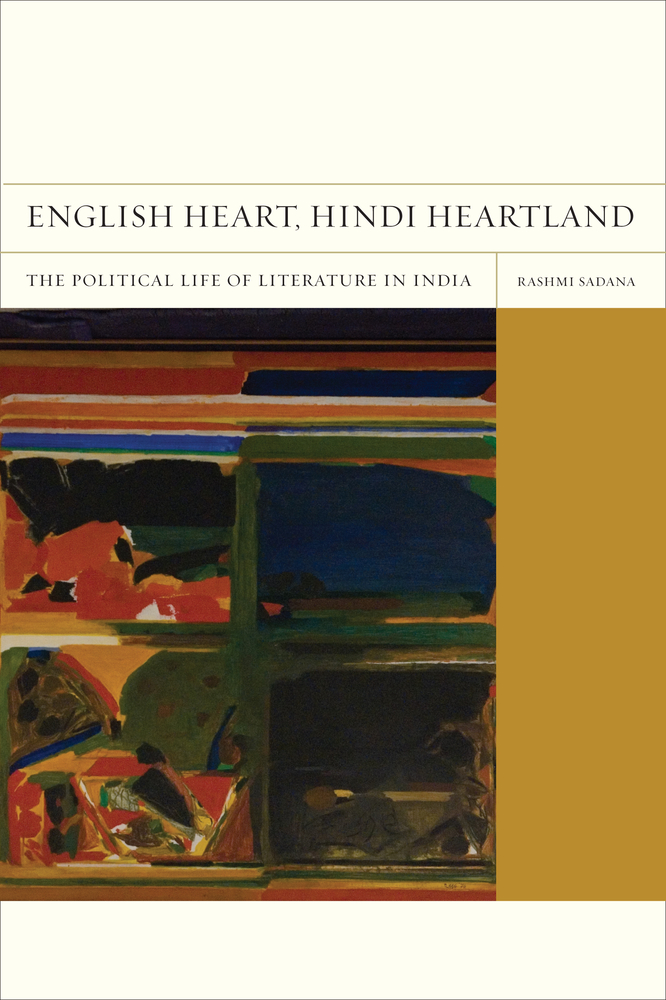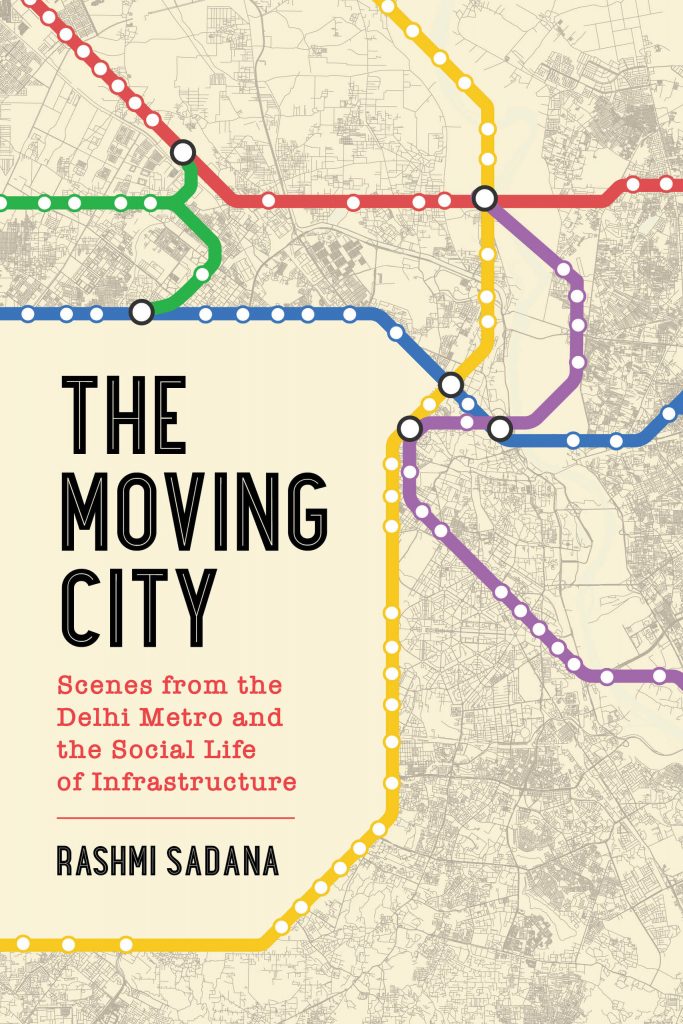The mission of SAR Press encompasses not only publishing research at the forefront of anthropology and Southwest and Native studies, but also providing resources to our past, present, and future scholars, as well as any scholar looking for more information about the publishing process. To that end, we are publishing a blog series comprised of interviews with diverse scholars who have recently published or are in the midst of publishing a book and who can offer guidance and encouragement to colleagues who are just starting to think about publishing. We hope that these interviews make a small contribution to supporting people as they begin the publishing process.

First, I’d like to ask you to tell me who you are, where you are in your career, and what you study.
Sure. I am an associate professor at George Mason University, and my second monograph, The Moving City: Scenes from the Delhi Metro and the Social Life of Infrastructure, is coming out in December of this year. I am a cultural anthropologist and urban ethnographer mostly focused on the study of urban India. My first book, which was based on my doctoral dissertation, came out in 2012, English Heart, Hindi Heartland: The Political Life of Literature in India, and this book was really a bridge between my study of literature as an undergraduate and coming into anthropology and the ethnographic method for my PhD. I also have a co-edited volume on modern South Asian culture that was a way to think about the broader themes of modernity and identity in a multidisciplinary context.
Tell me a bit more about your background as a scholar and how you got to where you are.
When I was an undergraduate at Berkeley, I was an English major, which I loved, but by my junior year I started to have a different idea of what an English major could be. English was actually a window onto other national literatures, postcolonial literatures, and a diverse range of cultural experiences. That was an exciting discovery, and it led me to do an MA in London at the School of Oriental and African Studies. In the course of my MA, I realized that my real desire was to connect the Indian literature I had been reading in English, in Hindi, and in translation to the multilingual experience of the Indian street. I decided to apply for a PhD program after my MA, and I eventually did fieldwork in Delhi with Hindi and English writers, translators, and publishers. My first book turned out to be an ethnography of postcolonial language politics looking at the local, regional, national, and global relationships of literary production. I was interested in the ethnographic method, which drew me to anthropology—I wanted to get out of the text and talk to people and also see how different kinds of institutions figured in literary production and what that meant in a postcolonial context. Also, I liked that anthropology was a discipline that was starting to have more of a critical awareness of how we study non-Western people, that is, the vast majority of the world. So I was also interested in issues of power and culture in terms of academic disciplines and not only the places we study.
Having parents from India certainly was part of my interest in studying India. I grew up in the United States, but I was also educated by my trips to India as a kid and by my cousins in India, being schooled by them about certain things. I was in many ways the typical American kid, and they taught me the world geography and colonial history that I needed to know. I also was aware of my own difference when I was in India, that I spoke American English and that had a different resonance in India than if I spoke with a British or Indian accent, so I got curious about language early on.
Often, I’m talking to people who are somewhere in the midst of their first book, and you’ve just published your second. Where are you in your writing and publishing process, and how did you get started?
It can be a leap to go from your dissertation to your book. You’re told you need it for tenure, which is true, but you also need it for your own intellectual development as a scholar. Taking the leap involves understanding your research in a new way. It’s a process and it can take some time. For the publishing part, I got advice from one of my mentors to look for a series. That was how I found a publisher, by first finding an appropriate series. The series I found was called FlashPoints, and it seemed to fit my book perfectly because it was about interdisciplinary approaches to aesthetics, culture, and literature. It was the bridge I was looking for between my literature past and my anthropology present, and I wrote a proposal for the series, in a sense. It gave me direction. This series was also part of the University of California Press, which was on my list of desired publishers. I think you should aim high in life and see if you get what you’re going for—you shouldn’t underestimate yourself. Sometimes it’s easier to do that because you feel like, am I really supposed to be here anyway? If you’ve made it that far and you have a book manuscript, then yes, you should aim high. Why not? It’s also important to note that sometimes the best press is not the one with the fanciest name. It can also be just the right press for your book. So doing research on publishers and series is really important, especially for a first book. You’ll learn a lot and also see where you’d like your book to fit in. From there it’s a negotiation. Things are not always linear. That’s okay, even if it doesn’t feel okay at the time!
The book proposal is really important, in my opinion, especially when you are starting out. It’s something that you have to spend a lot of time on, and I also had a lot of people read it, including my dissertation committee members. The other good thing about having people read your proposal is that they then know you’re trying to get your book published, and they might say, you should contact this editor at X press, or your book might work really well in this series that my friend is editing. With getting a book published there is also a networking aspect to it. I didn’t want to think about networking when I was in grad school—I had always been allergic to that idea—but with the proposal the networking happened more organically since I actually had something I was invested in that I wanted to share with others. You can think of your proposal as the beginning of getting the word out that you’re interested in publishing your book.
At the end of the day, the proposal is a document you have to revise a lot, but it’s also your vision for the book. And I don’t think I really realized until I was writing the book proposal for my second book on the Delhi Metro how important that vision part was, because that’s what gives your proposal the oomph that editors might be drawn to.
The book proposal is the founding document for your book, and for your first book, it can become more of a reliable roadmap than your dissertation. The dissertation can lead you astray. Publishers want to publish books. They don’t want to publish dissertations. If you want a book published, then you have to write a book, that’s what my advisors told me. And usually that comes after the dissertation. The dissertation can be the raw material for the book, but you need to put your book in your own voice and you need to relay your vision. I say vision rather than argument because a book has to have a wider appeal and purpose than your argument alone.
Sometimes the process of writing a book proposal can also help you figure out the vision for your book. Let’s say you’ve only written a small part of your book manuscript or a chapter that came from your dissertation, and you’re thinking, how do I even revise the dissertation? Well, the book proposal makes you articulate that. What is the essence of your book? What is the essence of your argument? What are your most compelling findings or stories? And the most important is why is this significant? Why do we need to pay attention to this issue right now? With academic writing, we’re all so specialized, but with the book you need to bring your head out of the sand a bit and think about the larger significance. Think about why this will connect not only with your ten favorite colleagues or twenty students or whatever it is. I think the book proposal helps with that process. It’s a document that can do a lot of things.
With The Moving City it had been such a long project because the metro had so many different lines opening in phases over more than ten years. I always had more to research and always more to write, but finally in about 2017, I knew that phase three of the metro construction was ending—the bulk of the system. And I thought, three is a good number. That’s how I started to think about my book; to be honest, the form of the book came from that. I thought, I’m going to have three parts to this book, and I’m going to start writing. I was in the middle of the academic year, and I started going to a Friday faculty writing group in the main library on my campus. I don’t think I ever missed a week. And most importantly, it’s when I wrote and figured out the book proposal, based on the little bits and pieces I was writing each week. Then that summer, I polished the proposal, I had people read it, and I thought, who do I want to be published by?
I decided I’d like to be published by California again if possible, but not in a series, so I crossed my fingers and sent it to the anthropology editor. I was very lucky because Kate Marshall e-mailed me the next day and we talked soon thereafter. Of course, I was happy that I got such a positive and quick response, but by then I had a certain confidence in my own vision of the book, so the conversation was also me making sure she got the book, that she understood what I was trying to do and that she would support it. It was the beginning stage, so I knew that one, I’d have to actually write the full book, and two, we’d have to send it out for review, and that it’s a long process, but I felt confident that she would be a good editor. And she really was. The book proposal also helped me write fellowship applications that led to my wonderful experience at SAR, where I was able to sit and write the book I wanted to write. To be honest, I would have written the book no matter where I was, in the sense that I had the vision because of the book proposal, but being at SAR and being part of this community of scholars inspired me in a general way, and having the focused time enabled me to finish the book within those nine months.
Can you tell me more about the writing itself and what helped you to get it done?
There are a few things. It’s good to have models, and this is something I tell my students now, especially my MA students who are writing theses for the first time. By models I mean books that I was really compelled by, even if they were on topics far from my own, maybe especially if they were far from them since that was more freeing. I thought, I might try out that form or part of that form. My Delhi Metro book is a mix of several different forms, and it is also inspired by parts of many different books. Form is important, at least for me it is, and maybe that also goes back to my start as a student of literature. What form do you want your book to take? Especially with ethnography, you have leeway with your narrative, and every topic, every subject, maybe has a different form.
When I was writing, I always had at least three books next to me that weren’t related to my research because I knew in certain moments, I just needed to look at something that would jolt my thinking in some way. It wouldn’t be a how-to book. It would be somebody else’s work, often another ethnography but sometimes a novel or history or theory book. And I would read a few pages: How are they doing that? How are they writing up this interview? How are they describing this interaction? And it would free up my mind in a good way in that I could then focus on my own stuff. I was having a dialogue with the form of these other books.
In these moments I wasn’t reading the whole book because that would be procrastinating. I would just read a page or two and it would spur me on, and I would think, OK, I’m just going to try this, no stakes, I can delete it. That’s how I discovered my own form but also how I kept writing every week. And I didn’t sit there twiddling my thumbs (too much)—I was either reading a model or I was writing, and most of the time I was writing. Writing is a very solitary activity, especially for academics, but you don’t have to be alone in your head all the time.
The other thing was when I had little drafts of just five, ten pages, I would show one or two people my work and get feedback of any kind. That gave me confidence to keep going but also those little bits of feedback helped me think through the larger themes of the book as I was going along.
This interview has been edited for length and clarity.



